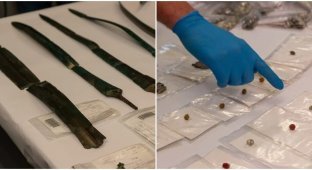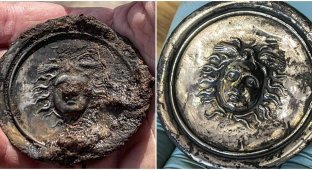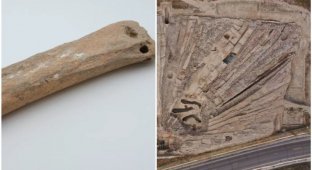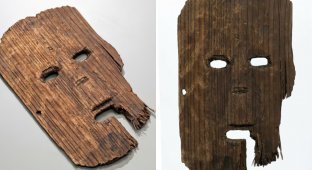Ancient Japanese sword hidden during the war found in Germany (5 photos)
A rare and ornate Japanese samurai sword from the 17th century has been discovered in Germany in a basement destroyed during World War II. It is a wakizashi, a short sword worn by samurai as a backup weapon alongside a katana. 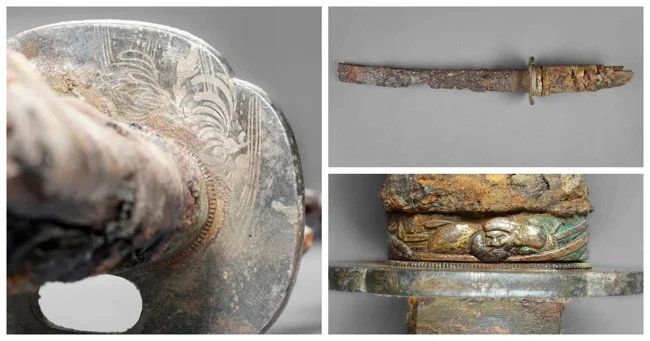
The sword was found during excavations on Molkenmarkt, the oldest square in Berlin. Archaeologists from the Berlin State Office for Monument Protection initially mistook the find for a military ceremonial sabre, but further careful analysis revealed that it was a genuine sword from the Edo period (1603-1868).
The blade may be even older, dating back to the 16th century. According to experts from the Museum of Prehistory and Early History at the Berlin State Museums, the sword may have been brought to Germany in the 1800s as part of a diplomatic mission, when Japan began to establish contacts with European countries. 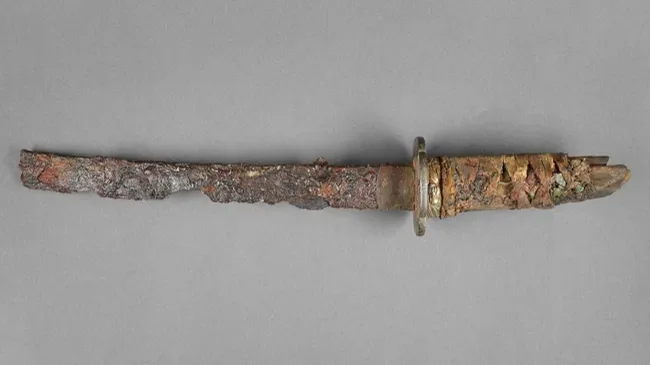
A wakizashi sword after restoration. Note the textile wrapping and the decorative copper element underneath
The restoration work revealed that the metal ring at the base of the sword's hilt depicts Daikoku, one of the seven gods of fortune in Japanese mythology, recognizable by his hammer and sack of rice. 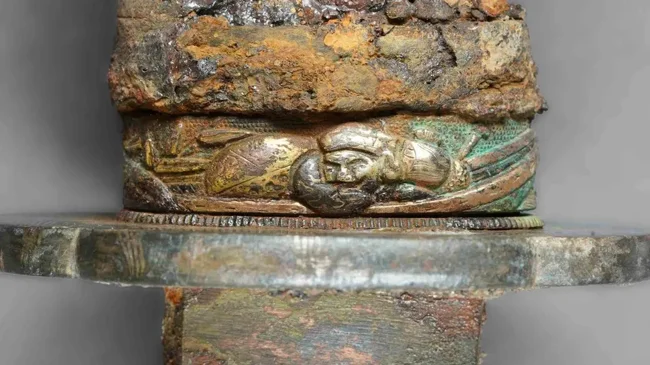
Daikoku, one of the seven Japanese gods of fortune, carries a hammer (right) and a sack of rice (left)
The sword's guard also contained damaged designs of chrysanthemum flowers and water lines, typical of Edo-period weapons. X-ray analysis revealed that the blade had been shortened and that the handle was not original, suggesting an earlier origin for the blade, possibly dating back to the 1500s. 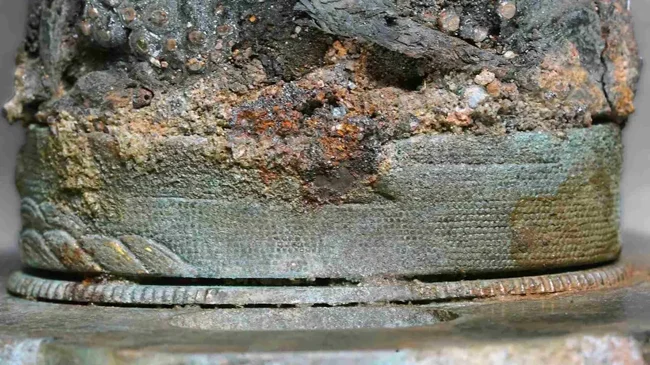
Back of the sword hilt and muff
How this rare and ornate sword came to Berlin is not exactly known. It is assumed that it may have been a gift from one of the Japanese diplomatic missions that visited Europe in the 19th century, such as the Takenouchi mission in 1862 or the Iwakura mission that followed eleven years later. German ruler Wilhelm I met with these Japanese embassies in his palace. 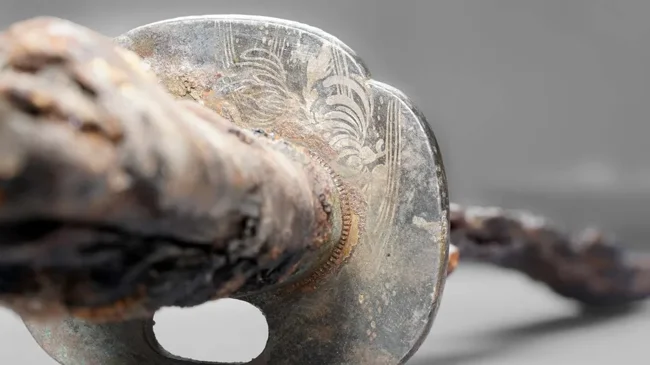
The protective plate (tsuba) depicts chrysanthemums and water lines
However, it remains a mystery how the sword ended up on Molkenmarkt and was buried under the rubble during World War II.













